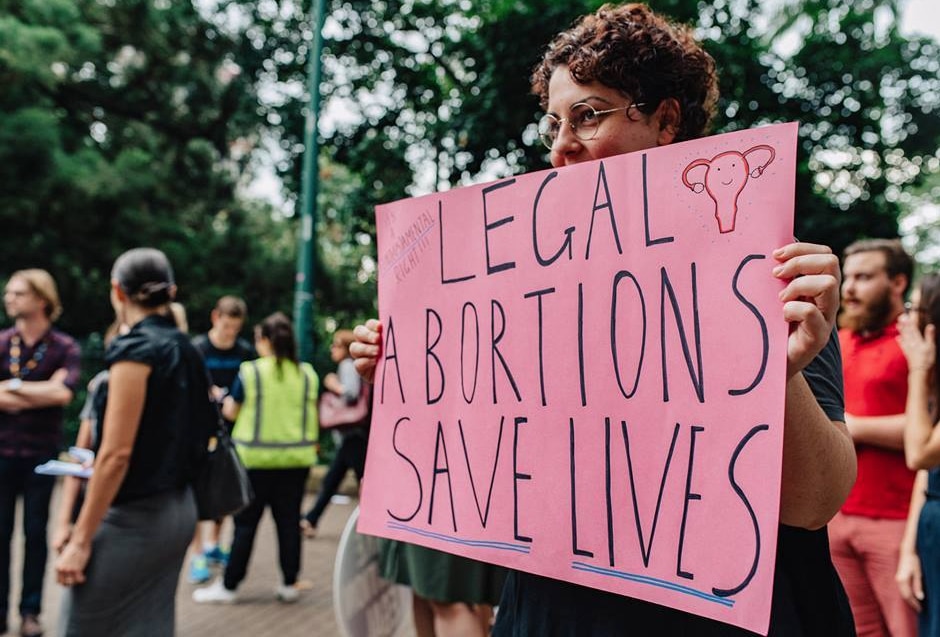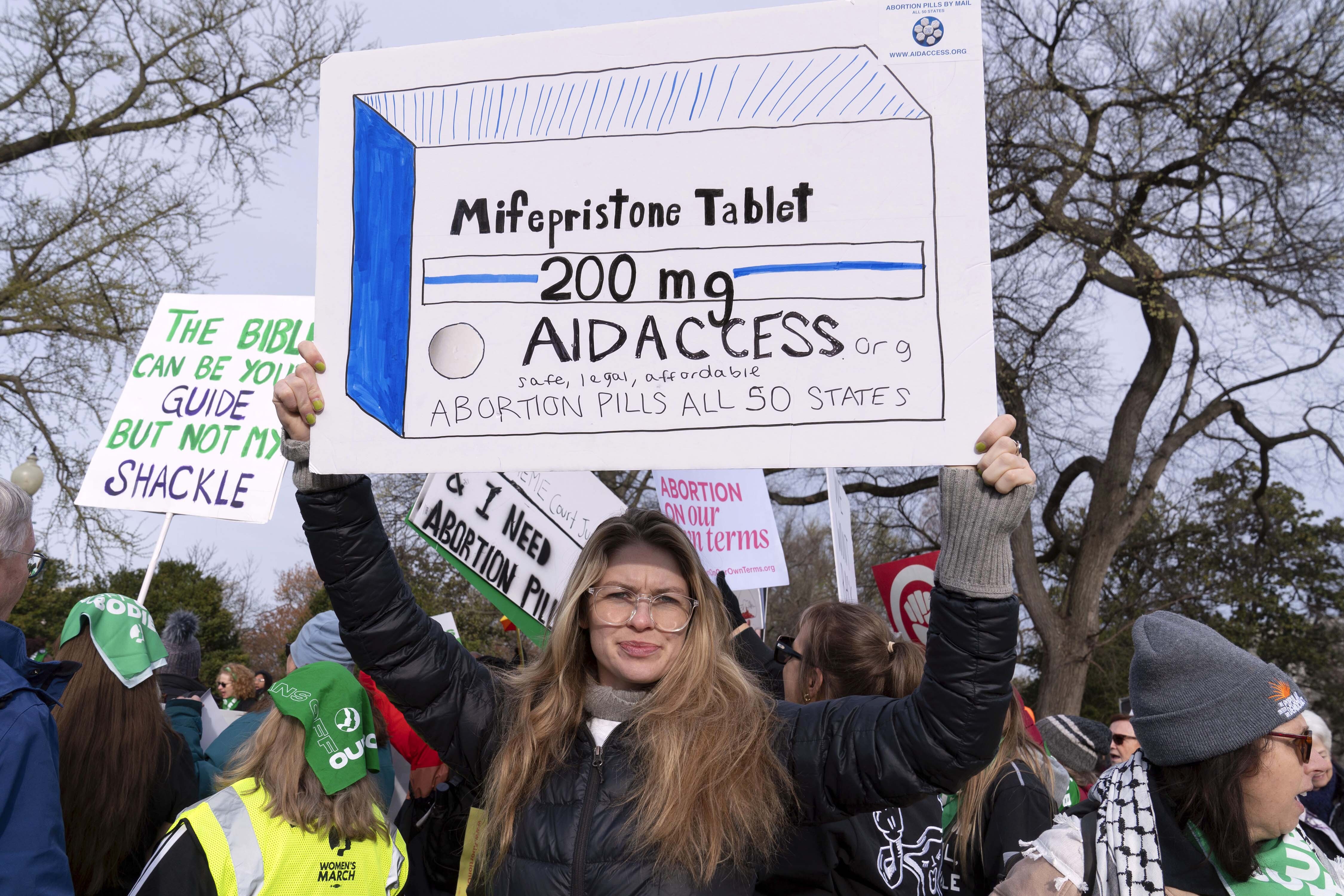Infant mortality increases following Dobbs ruling, while abortion rate stays the same due to travel and telehealth

Many young women don't realise abortion is still in the criminal code in Queensland and New South Wales.
A new study has found infant mortality rates in the US have increased more than expected following a court decision which overturned the constitutional right to abortion.
Meanwhile research published by the Society of Family Planning, has found abortion rates have stayed the same overall, despite an outright ban in some states.
Here's what we know.
Infant mortality
Peer-reviewed article National Trends in Infant Mortality in the US After Dobbs published in the Journal of American Medical Association Pediatrics, found since the US constitutional right to abortion was overturned in mid-2022, infant mortality has been higher than expected in the country every month.
Researchers used national monthly data on total live births and infant deaths from the US Centers for Disease Control and Prevention's (CDC's) database for the years 2018 to 2023.
It found the months after the Dobbs decision there was a 7 per cent absolute increase in infant mortality overall, about 247 more deaths than the prior periods.
It further found there was a 10 per cent increase in deaths for babies born with birth defects — about 204 more deaths.
Associate Professor Gizachew Tessema told ABC News that establishing a direct connection between restrictive legal policies and increased infant mortality rates is complex but there are reasons to connect the two together.
"One reason is that individuals who are denied access to abortion services, even in cases where the pregnancy poses life-threatening risks, may experience higher rates of infant mortality," Dr Tessema said.
"For instance, infants born with congenital heart conditions are more vulnerable to infections and other complications, which can contribute to higher mortality rates."
Dr Tessema said another reason that connects the two together is people who want induced abortions often have unplanned pregnancies, meaning they are less likely to receive adequate prenatal care.
"This lack of care can lead to preventable complications, such as preterm births, which are significant risk factors for perinatal morbidity and mortality worldwide," he said.
A third reason that Dr Tessema said connects the two together, is women who have restricted access to healthcare services may face mental health issues during the prenatal and postpartum periods of pregnancy.

Abortions are legal in all jurisdictions, but rules do vary.
He said mental health issues can include psychological distress and depression.
"These mental health challenges can contribute to negative perinatal and neonatal outcomes, potentially leading to death within the first year after birth.
"Psychological stress, in particular, may trigger a cascade of neuroendocrine changes that increase the risk of serious pregnancy complications, such as pre-eclampsia, further elevating the risk of infant mortality," he said.
What about the mothers?
A study published in the same journal in August 2024, also using data from the CDC found maternal deaths decreased after the Dobbs decision.
It found from August 2022 to January 2023, 12-month ending sums of maternal deaths declined 28.2 per cent from 1,069 to 768 deaths.
However, the paper reports that the decrease in maternal deaths appeared to be more related to a spike in COVID-19 related deaths in 2021 as opposed to changes after the Dobbs ruling.
Dr Tessema said that an analysis conducted by the study's authors also indicated that the post-Dobbs period continued to show excess deaths that "may not otherwise be explained".
"Restrictive legal framework to access abortion services will impact maternal health outcomes," Dr Tessema said.
He said in a study published in the American Journal of Public Health in 2021, it showed that states in the US with more restrictive abortion policies had more maternal deaths compared with states that had less restrictive abortion policies.
"In some circumstances, removal of legal abortion rights may trigger an increase of women to be involved in unsafe or illegal abortions which will endanger women's own lives," he said.
Dr Tessema said later-term abortions can raise ethical concerns as the fetus is more developed and it can pose increased health risks for the woman.

For medical abortions, the drugs used are mifepristone and misoprostol
He said there is a higher likelihood of complications "like haemorrhage, infection, and injury to reproductive organs."
"As a result, many countries have legalised abortion services, particularly for early pregnancies."
Could changes to Australia's abortion access affect infant deaths?
Dr Tessema said there are differences between the health systems in Australia and the US but if changes were made to legislation that allow individuals access to abortion services, it could negatively impact maternal and infant health.
"Currently, while accessing abortion services is legal in Australia, there remain structural barriers to abortion care in Australia, including variations of access where women living in regional and remote areas have lesser access than those residing in major cities," he said.
"The barriers include that medical abortion is prescribed by only qualified health professionals."
In Australia abortion is legal in each state and territory but specific regulations around timing vary.
He added that the legalisation to abortion remains a controversial issue.
"However, access to abortion services in the early stage of pregnancy needs to be recognised as a fundamental human right for women."
Abortion rate remains the same
The #WeCount report by the Society of Family Planning reports quarterly on the changes in abortion volumes, nationally and by state, following the Dobbs ruling.
The most recent report, released on October 22, found the number of abortions in states with bans at all stages of pregnancy fell to near zero.
It also plummeted in states where bans kick in around six weeks of pregnancy, which is before many women know they're pregnant.
But the nationwide total has been about the same or above the level from before the ruling.
The study estimates 99,000 abortions occurred each month in the first half of 2024, up from the 81,000 monthly from April through December 2022 and 88,000 in 2023.
"The abortion bans are not eliminating the need for abortion," said Ushma Upadhyay, a University of California, San Francisco public health social scientist and a co-chair of the #WeCount survey.
"People are jumping over these hurdles because they have to."
Where are people going?
Data from another group, the Guttmacher Institute, shows that women in states with bans still rely mostly on travel to get abortions.
West Virginia women, for example, obtained nearly 220 abortions monthly in the second half of 2023, mostly by travelling — more than in 2020, when they received about 140 a month.
Another reason the number of abortions has had a boost is telehealth, which got a boost when some Democratic-controlled states last year began implementing laws to protect prescribers.
In April 2022, about one in 25 abortions were from pills prescribed via telehealth, the report found. In June 2024, it was 1 in 5.
In the second half of last year, the pills were sent to about 2,800 women each month in Texas, more than 1,500 in Mississippi and nearly 800 in Missouri, for instance.
ABC/Wires
By:https://www.abc.net.au/news/2024-10-24/infant-mortality-increases-abortions-stay-the-same/104506248(责任编辑:admin)
下一篇:Zimbabwe score world record 344 runs in T20 innings against Gambia
 Socceroos rescue a point
Socceroos rescue a point  Wallabies thrash Wales 52
Wallabies thrash Wales 52 Jake Paul beats Mike Tyso
Jake Paul beats Mike Tyso Live updates: England vs
Live updates: England vs  US election 2024: Donald
US election 2024: Donald  US election live: Kamala
US election live: Kamala
- ·North Korea's latest weapon agains
- ·Hezbollah says Israel 'cannot impo
- ·Inside the rise of US oligarchs and how
- ·Thailand's worst suspected serial
- ·Tabi shoes are turning heads from Holly
- ·FBI arrests Florida man planning attack
- ·Illegal immigrant gets life sentence fo
- ·Bibles, water, watches and sneakers: Do
- ·North Korea's latest weapon against
- ·Hezbollah says Israel 'cannot impose
- ·Inside the rise of US oligarchs and how i
- ·Thailand's worst suspected serial ki
- ·Tabi shoes are turning heads from Hollywo
- ·FBI arrests Florida man planning attack o
- ·Illegal immigrant gets life sentence for
- ·Bibles, water, watches and sneakers: Dona
- ·US to give Kyiv anti-personnel landmines
- ·An arrest warrant for Benjamin Netanyahu
- ·One of Vietnam's high-profile politi
- ·Shanghai Walmart Attack: A Man Randomly S
- ·South Korean police officers jailed over
- ·Cambodia publicly shames maid deported af
- ·North Korea to use all forces including n
- ·Philippines condemns China attack of Viet
- ·US adds 2 more Chinese companies to Uyghu
- ·North Korean defector steals South Korean
- ·Malaysia deports Cambodian worker for cal
- ·Rebels battle for Myanmar junta’s weste

